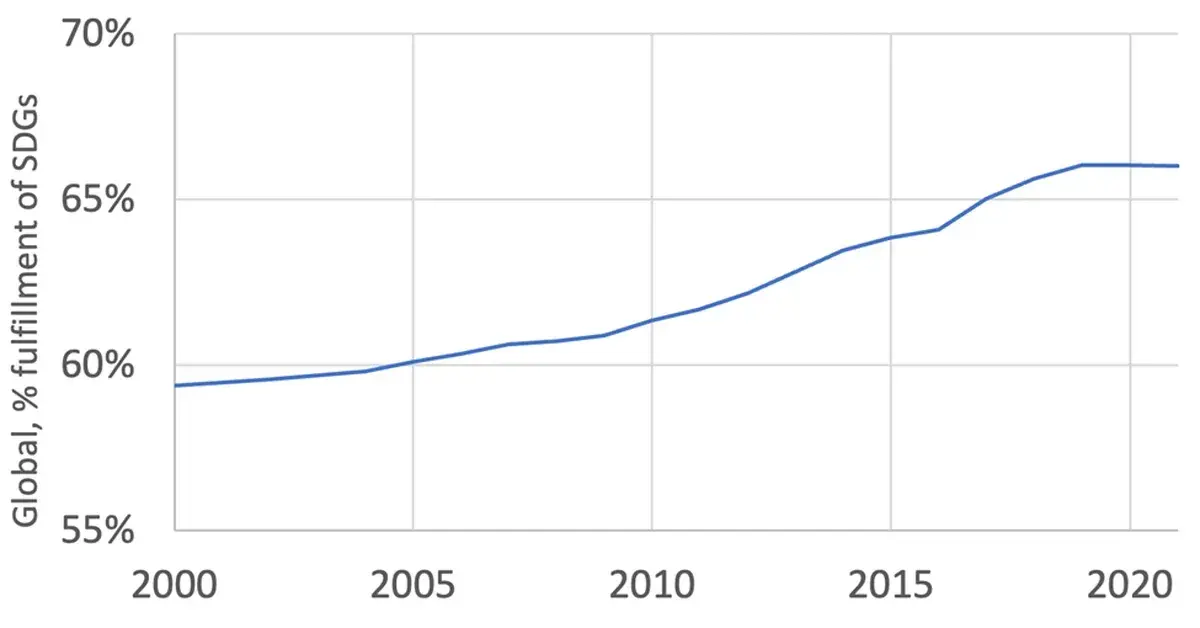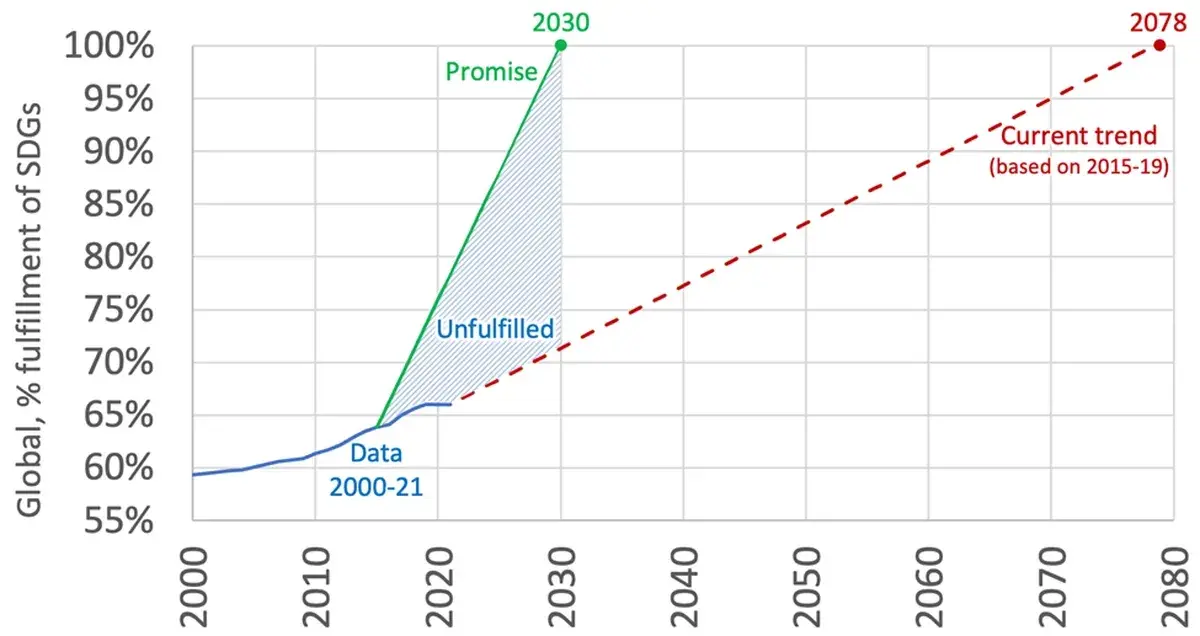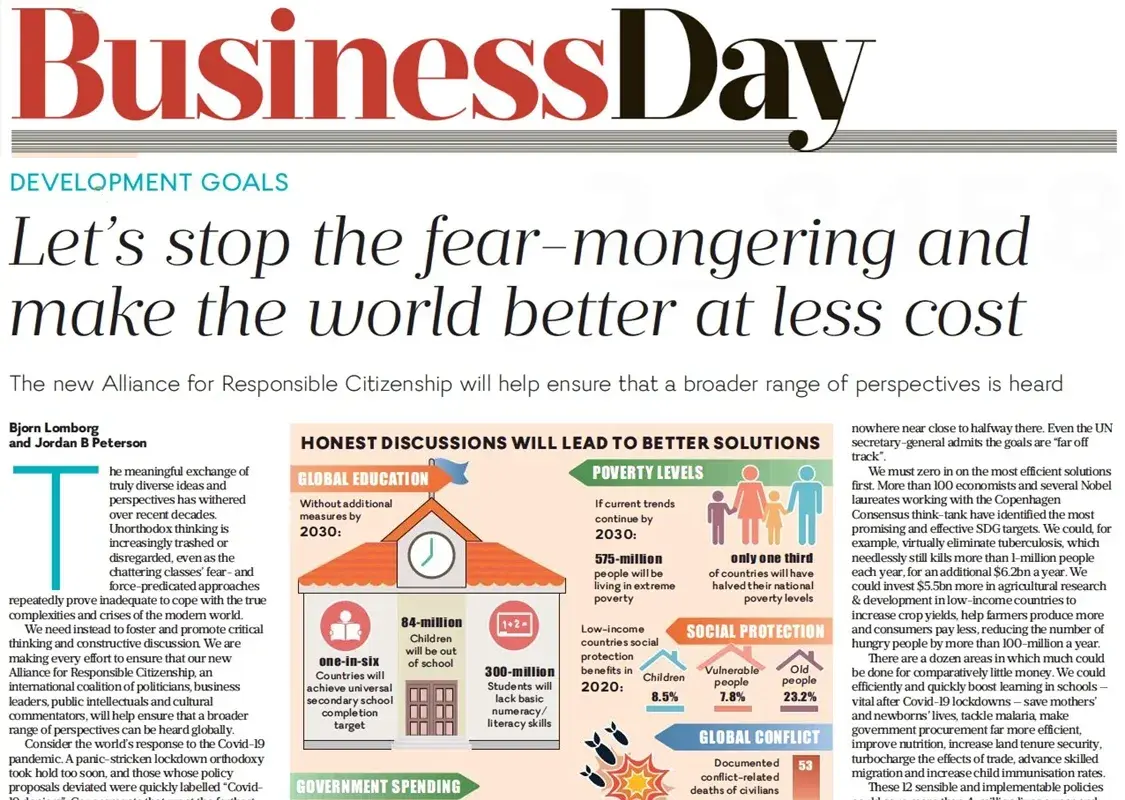We will be half a century late
The available data shows we are not seeing an acceleration in the progress in the areas of the SDGs.
Of course, it is almost impossible to deliver hard data on all or even most of the SDGs. Imagine trying to define the longwinded, meaningless target I mentioned above, let alone find data over many years for hundreds of nations, including the world’s poorest and least measured.
Nonetheless, a team of academics including Jeffrey Sachs, advisor to the UN Secretary-General on the SDGs, have combed through more than a hundred measures to estimate progress on the entire SDGs and on each of the 17 individual thematic goals, and have expressed progress for each one as a percent. It is constructed to be easily understandable: When Sweden, for instance, attains an 85% overall SDG score, it means that Sweden is 15% from fully achieving the SDGs.
We can see how the world is doing across all the SDG promises, according to Sachs, in graph below. Overall, the world is doing better than it was. This is not all that surprising, given that the SDGs are generally about good things, and as the world has become richer, we have been able to afford more good things.
We see a complete stall in progress in 2020 and 2021, likely because of the Covid pandemic, which precipitated many shutdowns and economic hardship.

There is a simple way to describe the discrepancy between what the world promised and what is actually being delivered: We can see how long it will take to reach the promise on current trends. Reasonably, we should exclude the Covid stall of 2020-21, so in the graph below we see the trend from 2015-19 extrapolated.

This shows that the world will reach the 100% mark for the SDGs after 2078, almost half a century late. Notice, this is not an actual prediction. It is very plausible that when countries get closer to 100%, they will shift their emphasis to other things, and spend their money elsewhere. But it is a very simple way to describe the difference between what the world promised would be achieved in 2030, and what we optimistically can actually deliver.




